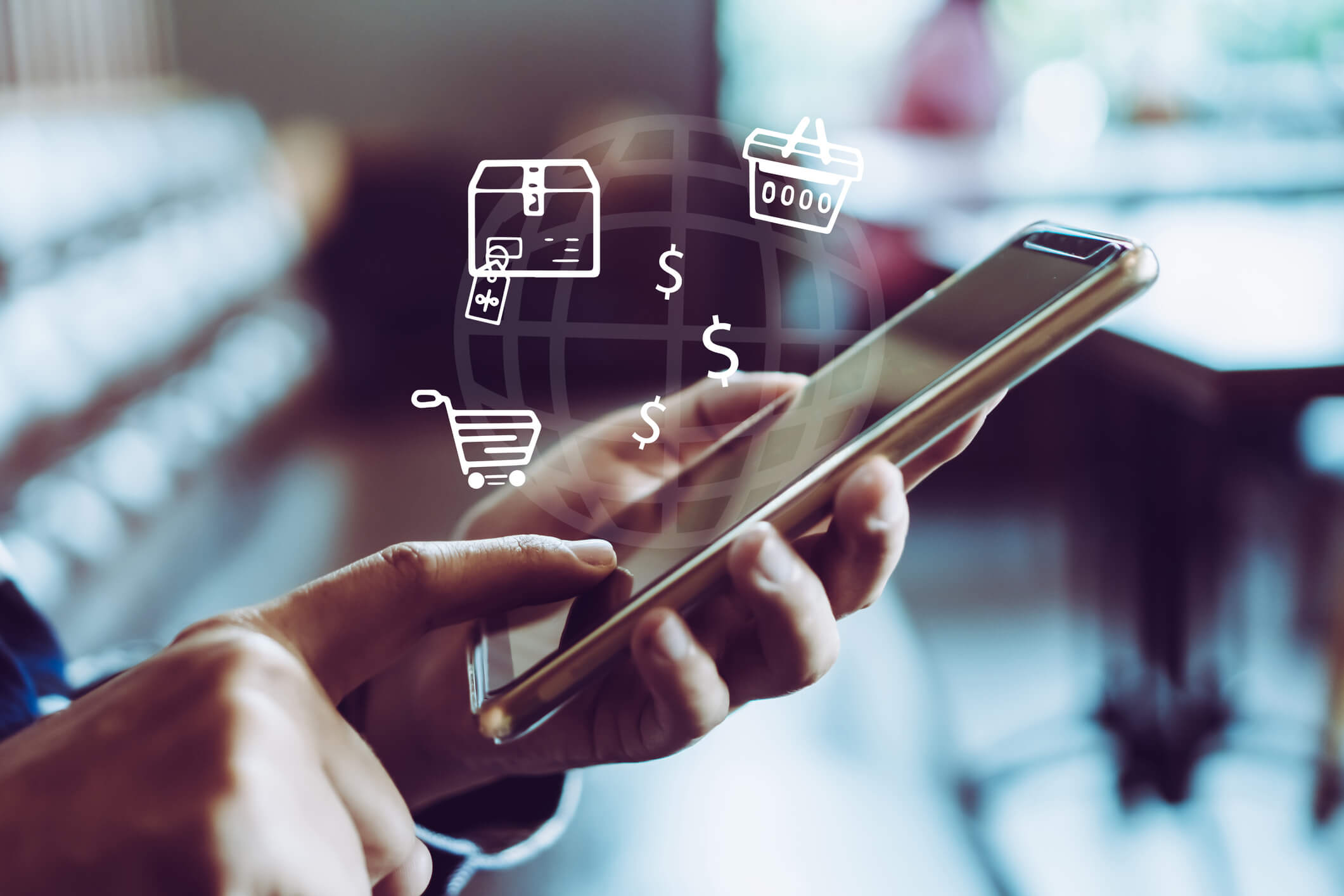How the coronavirus supercharged the move to online retail and may permanently change consumer behavior.
An overview of the current e-commerce landscape
It has been almost nine months since COVID-19 was first identified, after which it swiftly morphed into a global pandemic that continues to hold the world in its grip to this day and for the foreseeable future. Governments, with some exception, have done everything within political and economic means to reduce the severe societal and economic impacts of the global pandemic. In spite of this our economic landscape in 2020 has changed drastically. One of the most transformative ways can be seen in the world of e-commerce.
While much of our modern globalized economy suffers shortages and depression, e-commerce and online services have seen a meteoric rise in importance and consumer demand. We have experienced an artificially accelerated move to online retail, and have sped into the future at hitherto unimaginable rates. We may as well have stepped into a Delorean and gunned the engine to 88mph. New data from IBM’s U.S. retail index suggests that in terms of the expected use of online retail we are currently living in the year 2025. This means that brick and mortar stores have had five years of adjustment time reduced to zero, while online services and e-commerce stores experience capacity demands not expected for another half-decade.
This no temporary fling, and once COVID-19 ebbs out of the general population a return to the ‘old normal’ isn’t guaranteed. Much of the demand that has shifted online is expected to stay there, with few consumers planning to go back to physical stores. Businesses suddenly need to rapidly restructure and move online. Yet labor shortages and other challenges are crippling the global supply chain, and while demand is up e-commerce is facing bottlenecks to growth similar to those felt by retail.
It’s a whole new ballgame, and we are still trying to figure out the rules and the right plays to make. The recent woes of Sony and Nvidia serve as powerful examples of this. They respectively sold out of their PS5 and RTX 3080 stock minutes after launch, and experienced website crashes on their own platform as well as partner retailers. This combination of increased demand, met with restricted supply and slower restocking and response times, can temporarily cripple even large e-commerce giants like Newegg.
COVID-19 has cast a haze of uncertainty over 2020, e-commerce included. The fog however, has begun to lift somewhat, and so we can begin to understand its impact on both the present as well as the future. The changes we are seeing in consumer behavior, the impact on supply and logistics, the ascendance of high capacity online infrastructure as a critical investment, and the new normal for trust and branding all warrant discussion. So where do we go from here?
The new world: Topsy-turvy consumer demand in a global pandemic
Perhaps the biggest shift in consumer behavior has been the new ‘homebody economy.’ Most of us are home far more often, if not full time, and that means more time for gaming, online shopping, entertainment and online services. While the travel and fashion industry endure a slump in demand other goods like home electronics have become far more important in people’s lives. Not everything takes place in the cloud either, with a pet ownership boom, a renewed interest in board games, and furniture sales (especially for gardens and terraces) skyrocketing. It’s clear we are all settling in for the long haul and reprioritizing our purchasing decisions for home and hearth, and we are doing it online.
Values have also changed. Buying locally, already a key point of interest for many, has become more important as people see the economic impact COVID-19 is causing and prefer supporting their local economy. Health and safety have taken a prime seat in consumers expectations and demand for contactless delivery, and more hygiene and transparency is now a mainstay. Price sensitivity is way up, as people continue to try and restrict their spending. Brand loyalty is less important and consumers more often take the time to peruse the dearth of options online, and make value judgements based on the price and the perceived quality of the good.
While order volumes and demand online are up for the ‘homebody economy’ this hasn’t led to a boost in conversion. Cleary these new decision making practices are impacting how customers interact with websites online. The customer journey has changed. Fewer people are willing to quickly decide on a purchase and conversion is generally trending downwards. There are caveats however. E-commerce focused on upmarket goods does experience customers more willing to spend more on luxury home goods. The drop in spending elsewhere leaves more disposable income for customers to pamper themselves where they now spend most of their time. For e-commerce retailers pricing, promotion and loyalty strategies will need to adjust to meet this changed landscape. The question many are attempting to answer now is whether these behavior and value shifts will remain permanent, or if we just need to adapt for a bump in the road and be ready to soon get back to what we knew pre-2020.
While it’s possible that this sea change in behavior is a short term phenomenon, it’s far more likely that this crisis is cementing people’s habits and values, especially when it comes to online shopping and services. The convenience and variety afforded was already a powerful lodestone. In fact we were already well on our way to transitioning fully to e-commerce and the online economy, as well as working from home. COVID-19 just happened to force the issue. The WTO (World Trade Organization) expects this change to stay, with businesses and consumers now used to online services at home and ‘in the office.’ The demand shift online is therefore not going anywhere, and we can only expect additional growth in the need for online education, e-work, and e-health services to boot as these sectors are also forced to move into the cloud.
COVID-19 : New risks and disruptions to supply chains, logistics, delivery services, and B2B e-commerce
As much as e-commerce makes everything easier for the consumer, the supply chain is as real and extensive as brick and mortar retail, and just as vulnerable. COVID-19 has caused supply chain disruptions not seen since the second world war. Lockdowns intended to slow down the virus have also hamstrung e-commerce supply lines and delayed if not outright shuttered a large flow of goods. Warehouses have to exist somewhere, and if they happen to be in an affected area it becomes challenging to predict manufacturing capacity and supply.
It’s not all doom and gloom. Supply chains are surprisingly flexible. Significant investment is being made to localize both production and sourcing which in addition to providing stability also come with environmental benefits. Unlike with consumer demand however COVID-19 has caused a reversal in the prevailing economic trends rather than accelerating them, pulling back from increasing reliance on global supply chains. This means that post-COVID-19 the direction that supply and logistics take is much more unpredictable. For the short and medium term the answer is clear; supply chains and sourcing will by necessity need to be more local. In the long run we just don’t know enough, nor do we have the foresight to tell if we go back to a truly global economy, or if we downsize.
Had we intended to test the vulnerabilities of our global supply chains then we couldn’t have done much better than COVID-19. Hundreds of thousands of passenger flights cancelled means less air freight, new health and safety regulations result in the disruption of land, sea, and air transport. Across the board costs have increased as a result for all B2B and B2C transactions. Customers now frequently experience delays, cancellations, and poor communication, as businesses lack a clear picture of their own supply lines and struggle with managing expectations. Those expectations are important, as trust and clear communication is a precious resource in e-commerce. For now, as businesses continue to deal with their own unknowns, setting clear communication guidelines and keeping customer expectations in check will become critical to maintaining an e-commerce platform.
E-commerce needs to focus on consumer protection and trust
If you’ve been doing more background checks on companies you purchase from online, you’re not the only one. A supply chain in tatters while consumer behavior undergoes seismic shifts. Things this fundamental always affect trust and confidence. Combine a more elastic demand, influenced more by price and perceived value, with less brand loyalty and frequently disappointing service due to COVID-19 disruptions and you get an increase in the demand for social proof. Consumer trust is in fact quickly becoming one of the most valuable resources for e-commerce. We engage more, read more, and have developed a tolerance for more content before we buy; whether on review sites, social media, or online forums. E-commerce sites during COVID-19 need to do more than offer the product and a good user experience. They need to offer the social proof that their services and products are delivered on time and in a good state, this no longer seems to be a bonus, but a necessity.
So, what happens to already sensitive online consumer demand when you throw cybercrime into the mix? Fraud follows the money, and with a 110% year on year increase in e-commerce orders in the U.S. there is more questionable activity online than ever. While retailers scramble to scale up and localize their delivery and supply chain the impact of fraud is less immediately visible, but no less a danger to long term growth. This becomes an important aspect of consumer trust, and so another variable to influence purchasing decisions. Again, we see the need on the consumer side for social proof, and the active development of trust through consumer engagement.
When trying to build trust, for businesses or consumers, there’s more than one way to skin a cat. The fast-growing e-commerce landscape has online shoppers adapting to this new wild west with stricter requirements on information transparency. Proactive action against fraudulent or flawed products is key for re-establishing the trust that existed pre-COVID-19. The market research group NPD has a good overview of the many ways that information transparency can be expanded upon, including visual aids, more information regarding the feel or a product, and expanding the details of the service and delivery times. Building the bridges back up between consumers and e-commerce stores will do much to carry us into the cloud strewn future, but we’ll need the online infrastructure to stop us falling out of the sky.
High bandwidth services, security and network capacity critical in a COVID-19 and post-COVID world
There is never enough data. Network capacity, and the availability of high bandwidth services have been for many the lifeline to friends, hobbies, entertainment and work. The shift to online operations meant that many companies have had to adapt quickly to growing capacity constraints. Small and medium sized businesses that experienced demand surge suddenly needed more robust websites with greater capacity, analytics, security and online storage. Services like the opera or theatres which are traditionally offline have started to offer online streaming as an alternative, which has also contributed to the rising data volumes. Giants such as YouTube and Netflix have even gone so far as to reduce video quality to alleviate any potential network disruption. Digital infrastructure is now a requirement for schools, the arts and almost everything professional and recreational in modern life instead of optional.
We’ve previously discussed that the increasing demand for online services has been met with a spree of cybercrime. This has a direct impact on the need for more robust online networks and platforms. At a time when businesses and infrastructure are vulnerable, hackers are now doing their best to take down as many websites and government portals as they can. What is new now, is that cybercriminals are also more frequently targeting smaller businesses instead of the larger e-commerce giants, who are more used to this unwanted attention. Ransomware and DDoS attacks especially have been occurring more frequently, in many cases with devastating results as observed by The National Cybersecurity Institute, where a study showed up to sixty percent of small to medium sized businesses attacked went out of business.
The pandemic has clearly provided some advantages to businesses moving online, yet it has also come with several additional risks. In the span of less than one year the need for small and medium size businesses to invest in a secure and stable back-end for their e-commerce platform or online service has ballooned. At the same time capacity and security needs to be a focus for every online service of every size. One can argue that if the internet was a city, 2020 was the year that many decided to move there, and so suddenly we have an enormous infrastructure debt. We still have a long way to go.
Where we go from here?
We know much more now about the current and future impacts of COVID-19 than even a few months ago. What’s frightening is that we can’t yet know the scope of the societal shift that’s happening, though we can make several educated guesses as to its direction and impact. The good news for e-commerce is that there is plenty to do that we know works, for both the now and the coming years. For many retailers network capacity and security needs a serious paint job. Consumers need to see their increased need for information and social proof reflected in the websites they visit, or they’ll go elsewhere. While global supply chains won’t necessarily be stable any time soon communicating honestly with your potential shoppers goes a long way. Behind the curtain many will have to look at how they source and manufacture goods, headache inducing as that may be. As far as demand goes everyone from your top-tier brand to your up-and-comer needs to get smarter with their pricing, promotion and loyalty strategies.
Where we go after that depends on a variety of factors that fall into the category of things that we know, that we don’t know. Do we globalize or localize, how long does COVID-19 continue, how severe will future lockdowns be, and will a longer period under a pandemic change consumer behavior outside of trends seen pre-2020. While none of these questions have answers now, the global community is doing a great job of making information easily available for those curious to know. When someone knows, you’ll know. As 2020 starts to fade and we walk into an uncertain 2021 it’s important to remember that as far as e-commerce goes, we’re living in the future. If nothing else that deserves a moment to marvel.
Hi! My name is Dion, Account Manager at Hypernode
Want to know more about Hypernode's Managed E-commerce Hosting? Schedule your online meeting.
schedule one-on-one meeting +31 (0) 648362102




